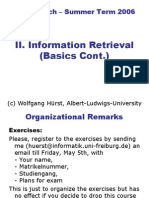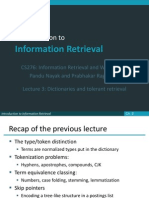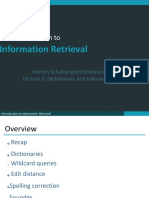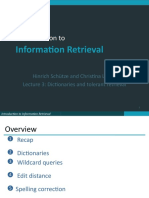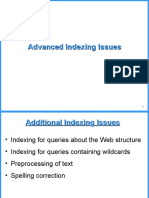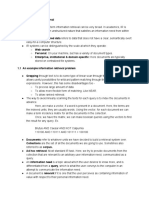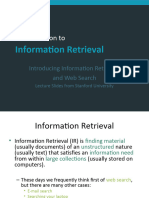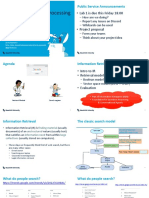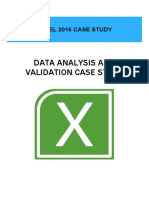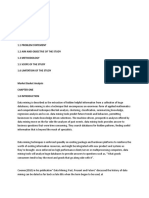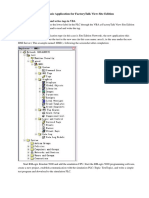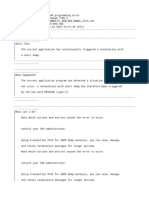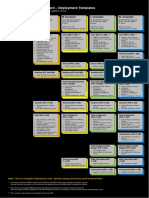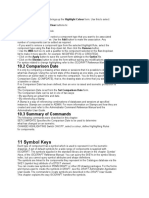0% found this document useful (0 votes)
20 views53 pagesLecture 03
Lecture 3 covers dictionaries and tolerant retrieval in information retrieval systems, focusing on the type/token distinction, tokenization issues, and various indexing methods like positional and biword indexes. It discusses dictionary data structures, including hash tables and trees, and explores wild-card queries, spell correction techniques, and context-sensitive corrections. The lecture emphasizes efficient query processing and the importance of handling user uncertainty in spelling and terminology.
Uploaded by
samplesaji1Copyright
© © All Rights Reserved
We take content rights seriously. If you suspect this is your content, claim it here.
Available Formats
Download as PDF, TXT or read online on Scribd
0% found this document useful (0 votes)
20 views53 pagesLecture 03
Lecture 3 covers dictionaries and tolerant retrieval in information retrieval systems, focusing on the type/token distinction, tokenization issues, and various indexing methods like positional and biword indexes. It discusses dictionary data structures, including hash tables and trees, and explores wild-card queries, spell correction techniques, and context-sensitive corrections. The lecture emphasizes efficient query processing and the importance of handling user uncertainty in spelling and terminology.
Uploaded by
samplesaji1Copyright
© © All Rights Reserved
We take content rights seriously. If you suspect this is your content, claim it here.
Available Formats
Download as PDF, TXT or read online on Scribd
/ 53










